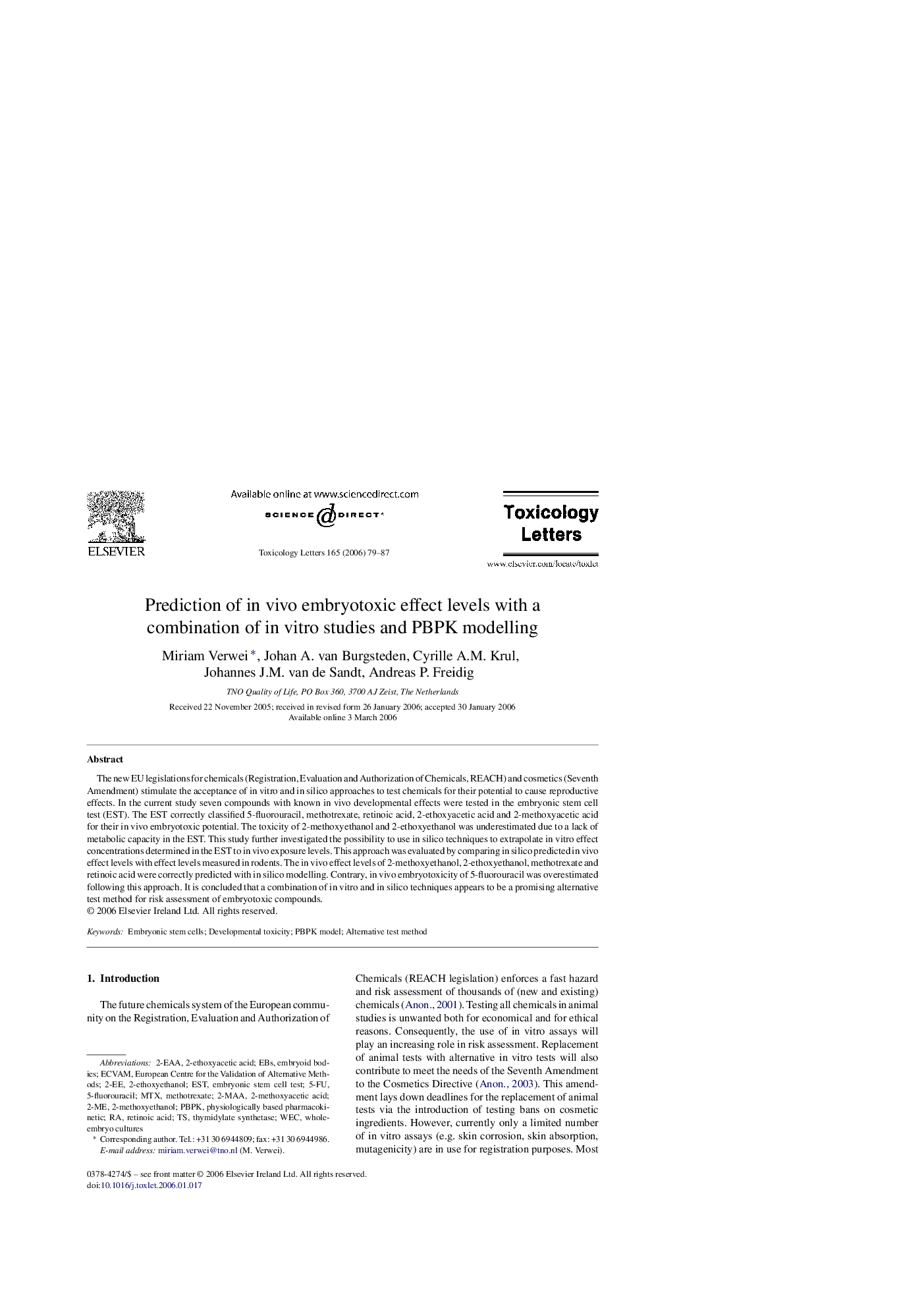| Article ID | Journal | Published Year | Pages | File Type |
|---|---|---|---|---|
| 2601643 | Toxicology Letters | 2006 | 9 Pages |
The new EU legislations for chemicals (Registration, Evaluation and Authorization of Chemicals, REACH) and cosmetics (Seventh Amendment) stimulate the acceptance of in vitro and in silico approaches to test chemicals for their potential to cause reproductive effects. In the current study seven compounds with known in vivo developmental effects were tested in the embryonic stem cell test (EST). The EST correctly classified 5-fluorouracil, methotrexate, retinoic acid, 2-ethoxyacetic acid and 2-methoxyacetic acid for their in vivo embryotoxic potential. The toxicity of 2-methoxyethanol and 2-ethoxyethanol was underestimated due to a lack of metabolic capacity in the EST. This study further investigated the possibility to use in silico techniques to extrapolate in vitro effect concentrations determined in the EST to in vivo exposure levels. This approach was evaluated by comparing in silico predicted in vivo effect levels with effect levels measured in rodents. The in vivo effect levels of 2-methoxyethanol, 2-ethoxyethanol, methotrexate and retinoic acid were correctly predicted with in silico modelling. Contrary, in vivo embryotoxicity of 5-fluorouracil was overestimated following this approach. It is concluded that a combination of in vitro and in silico techniques appears to be a promising alternative test method for risk assessment of embryotoxic compounds.
